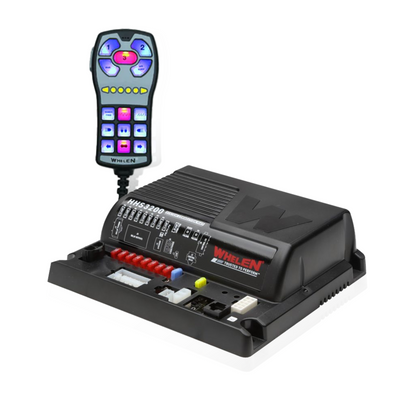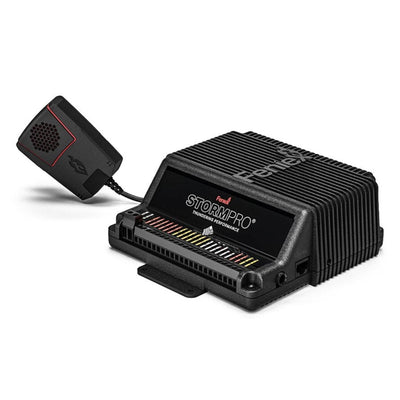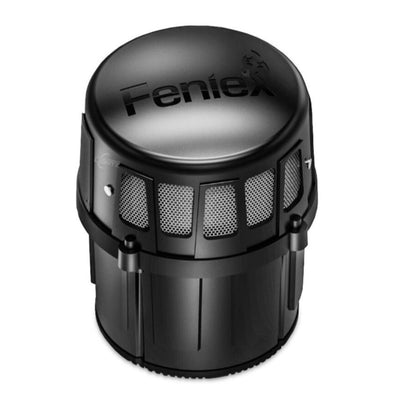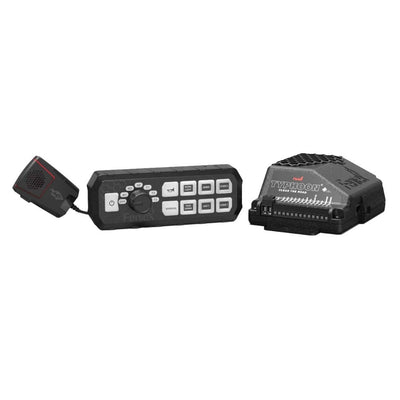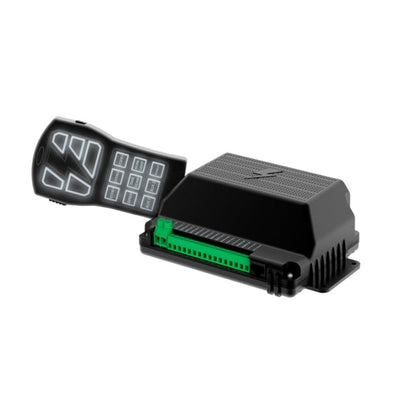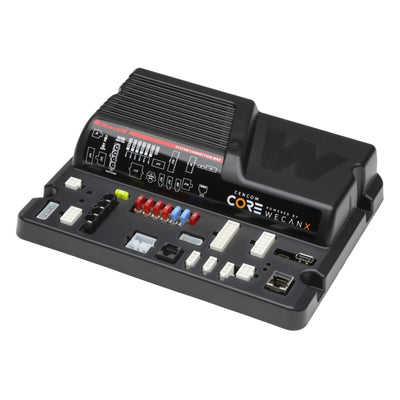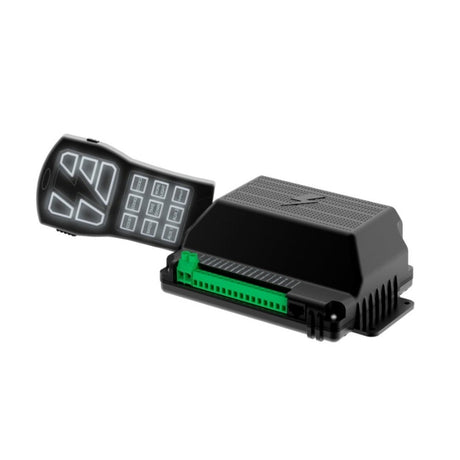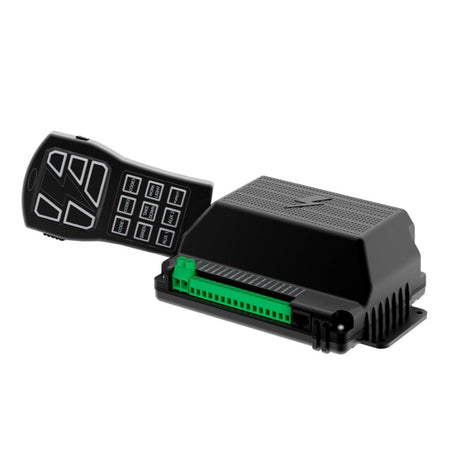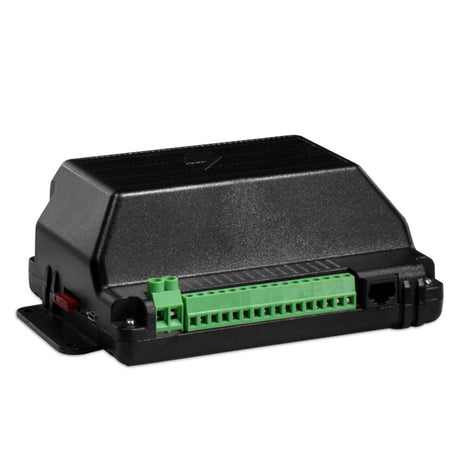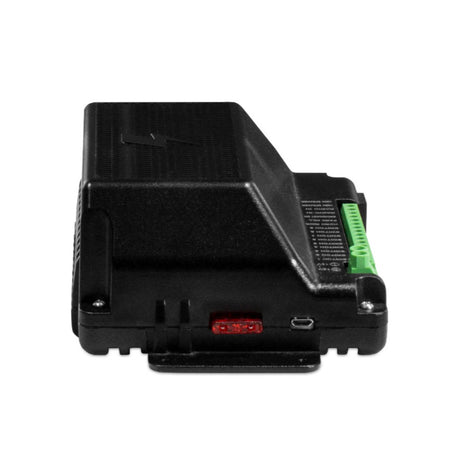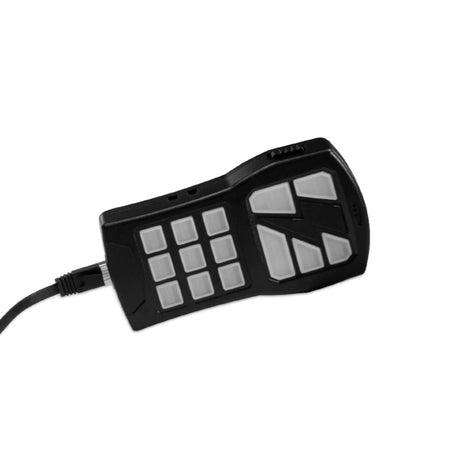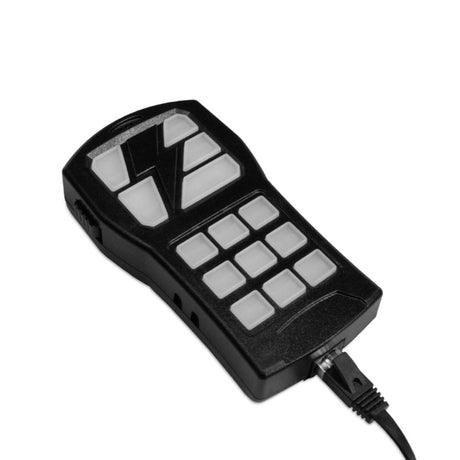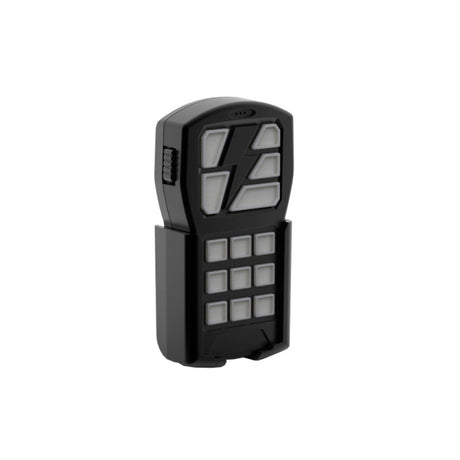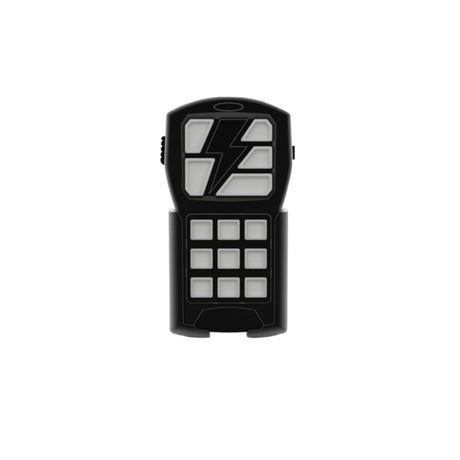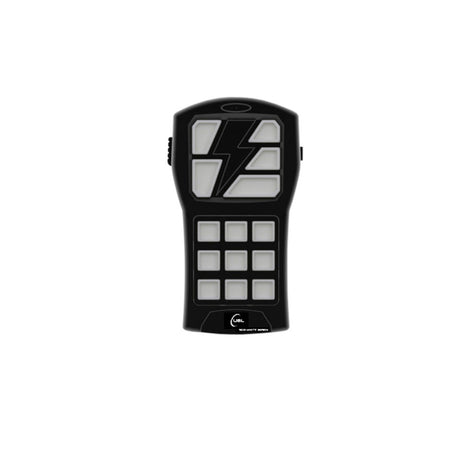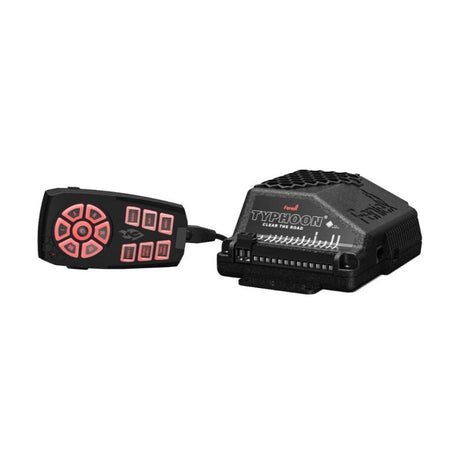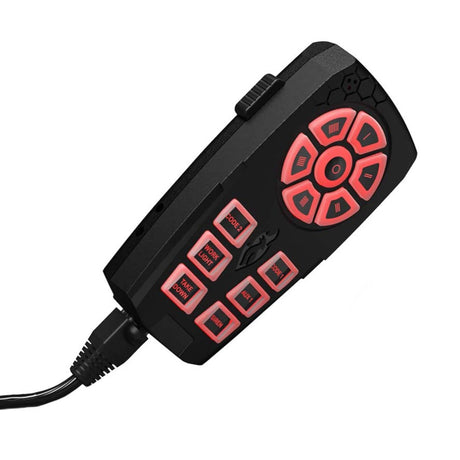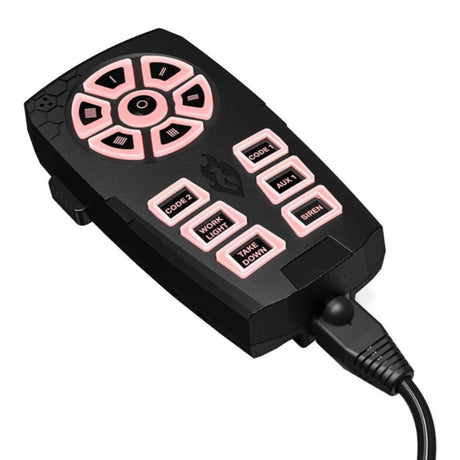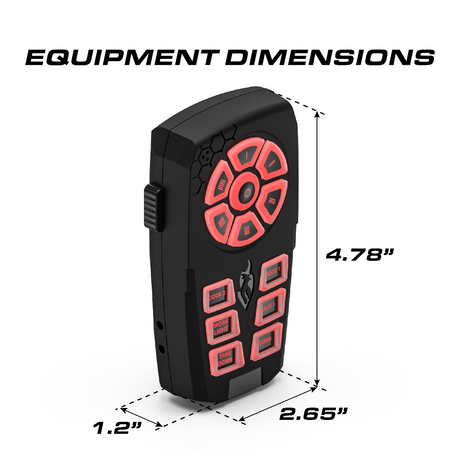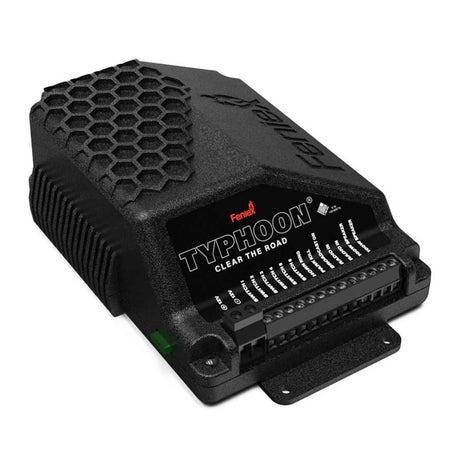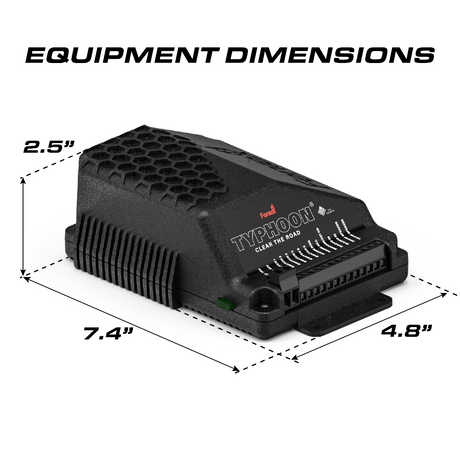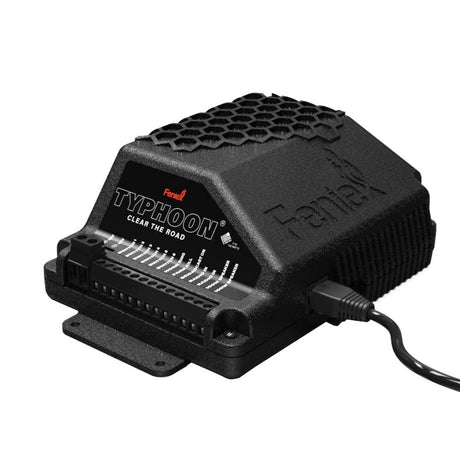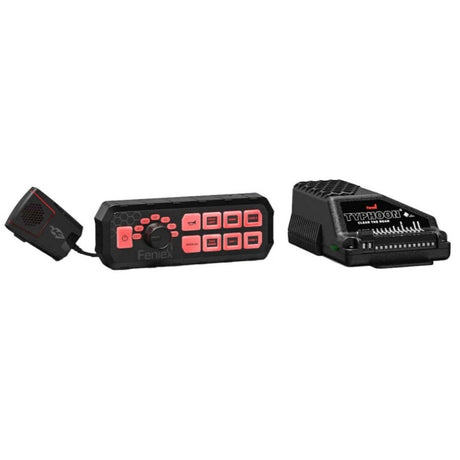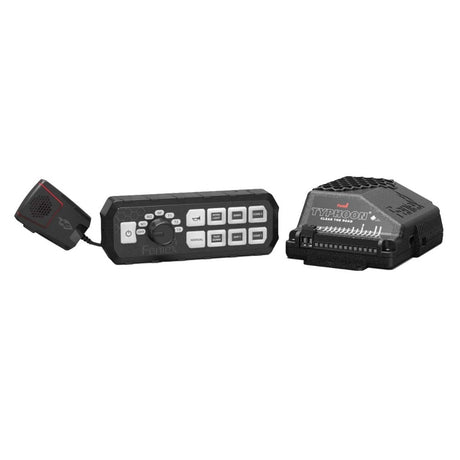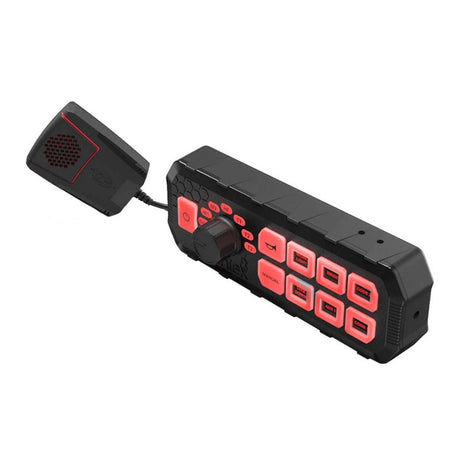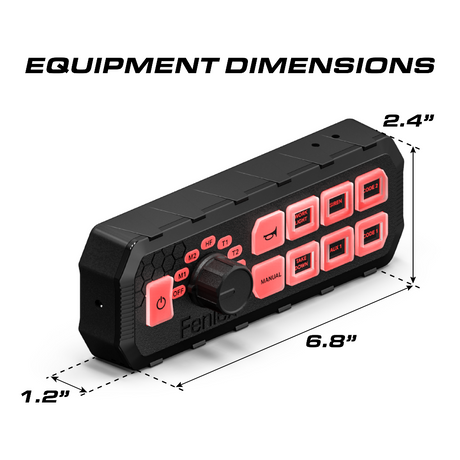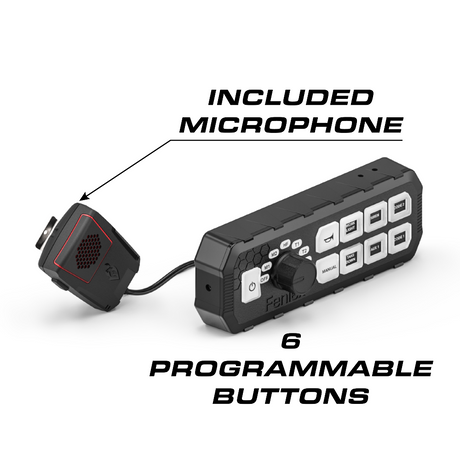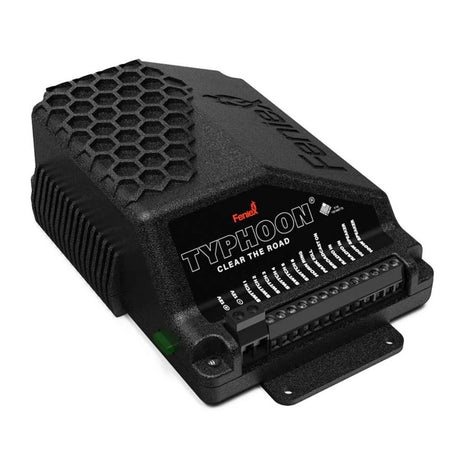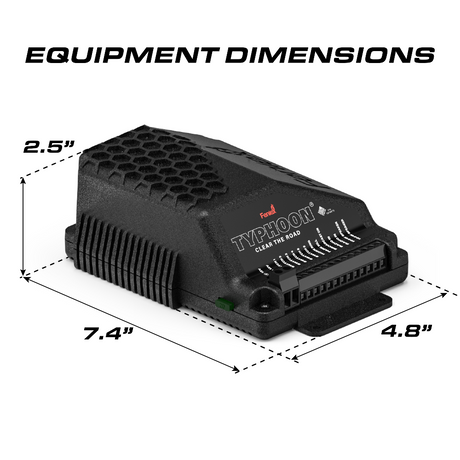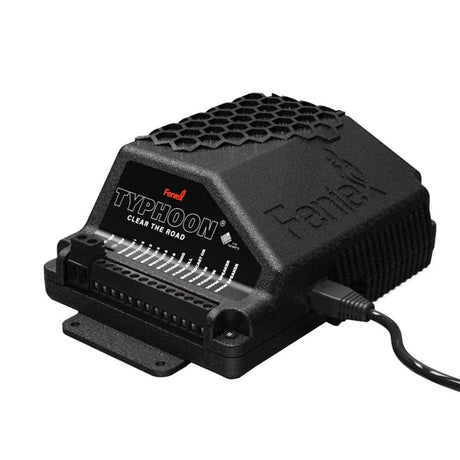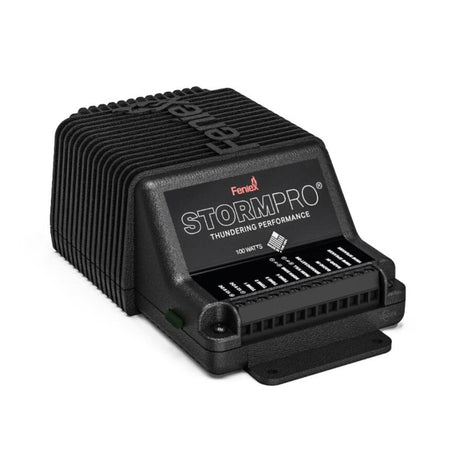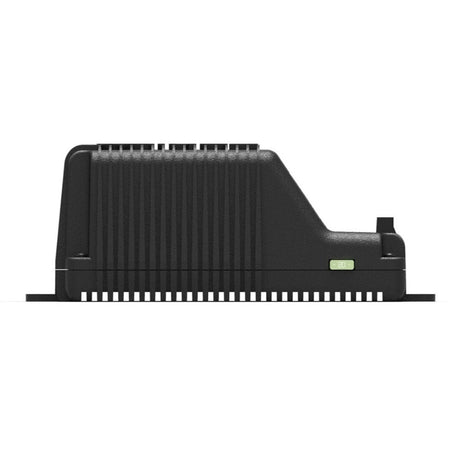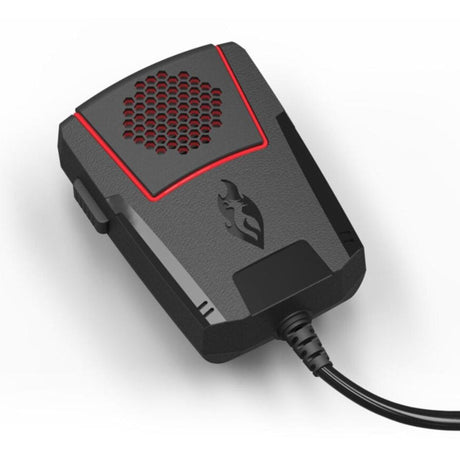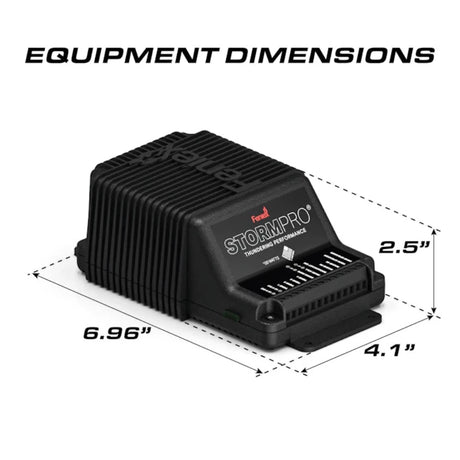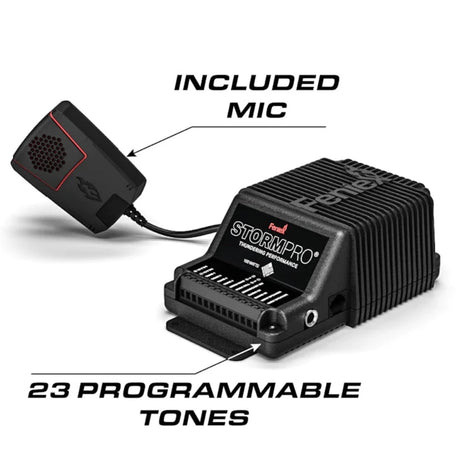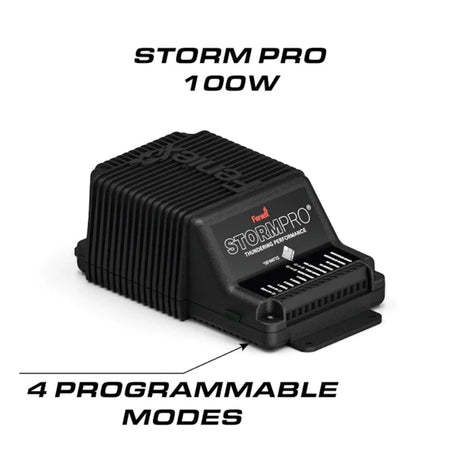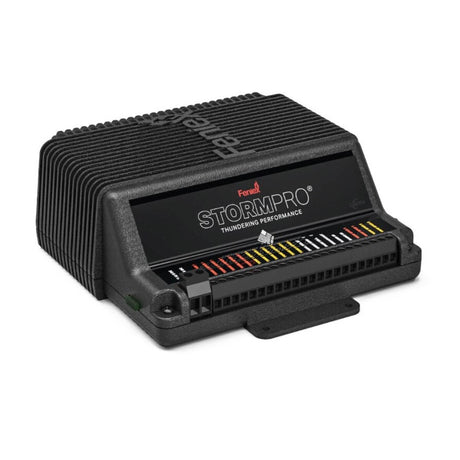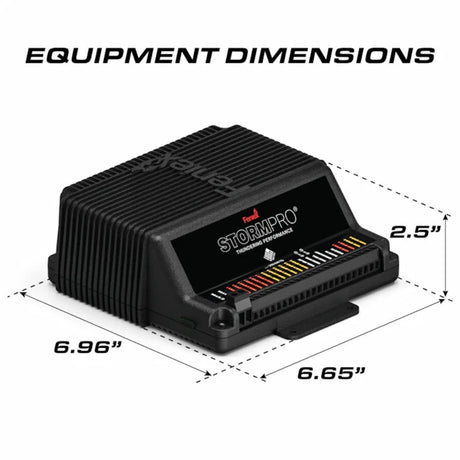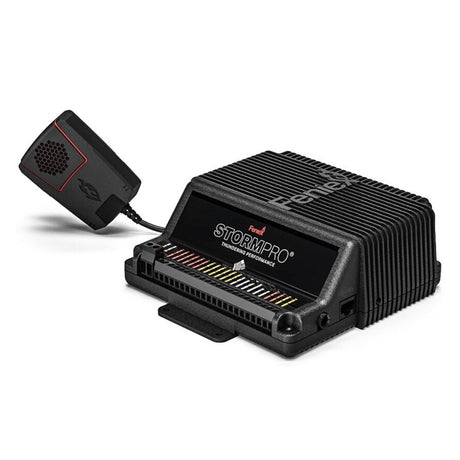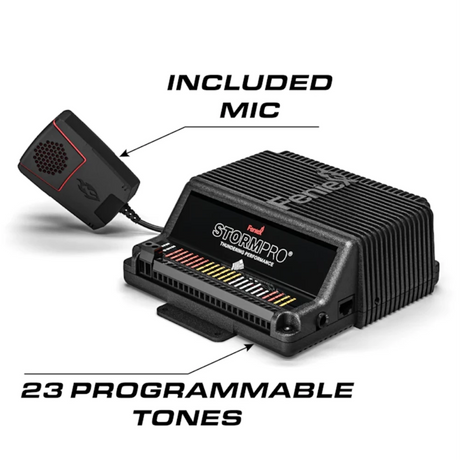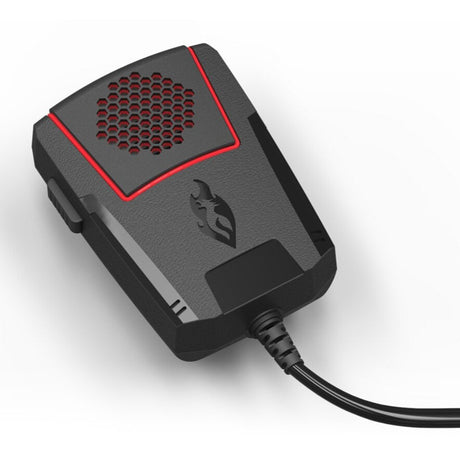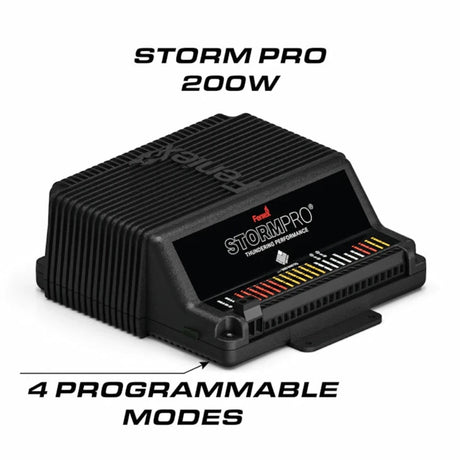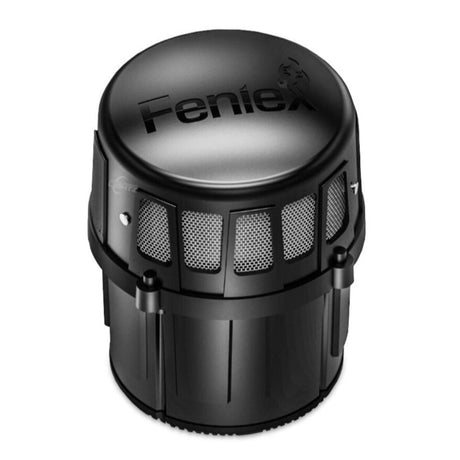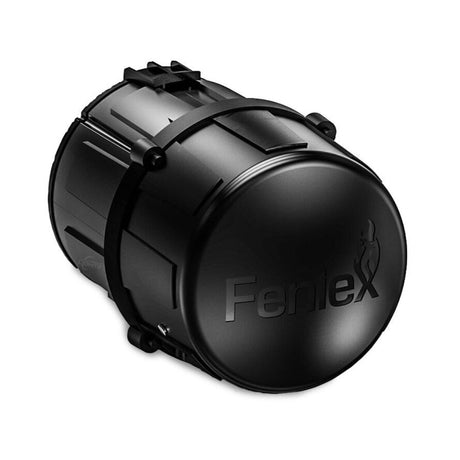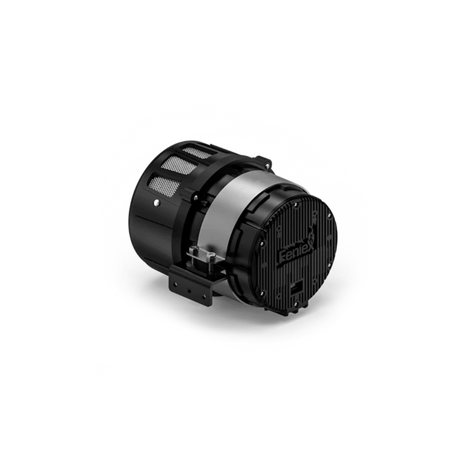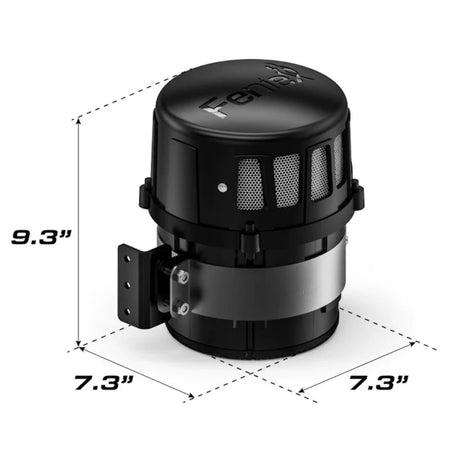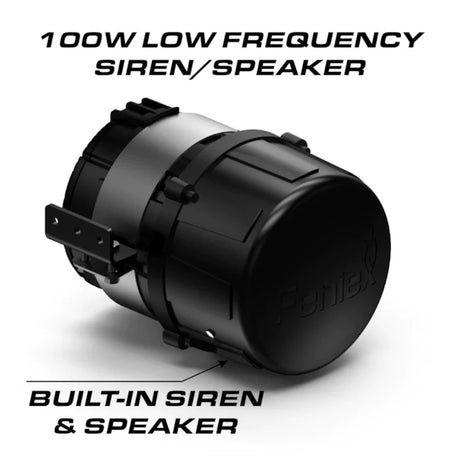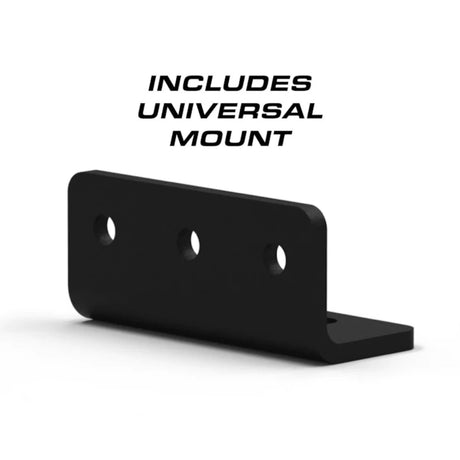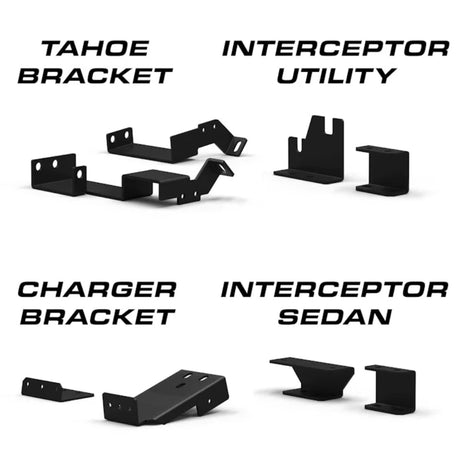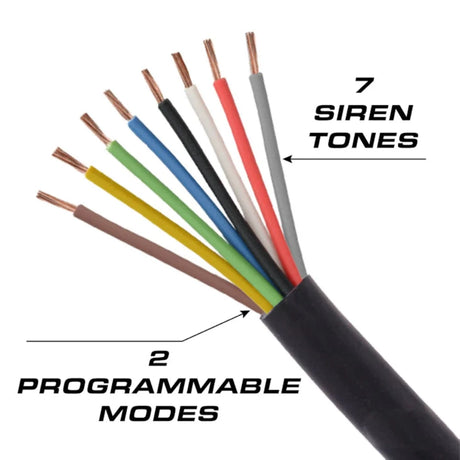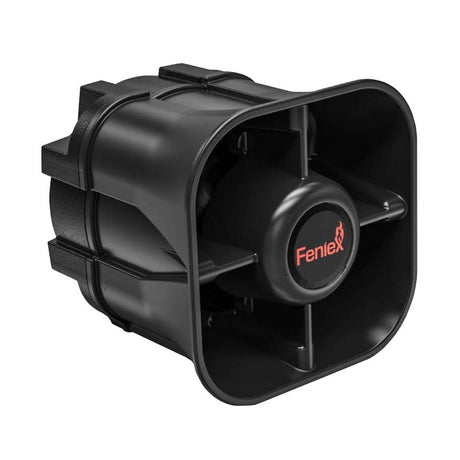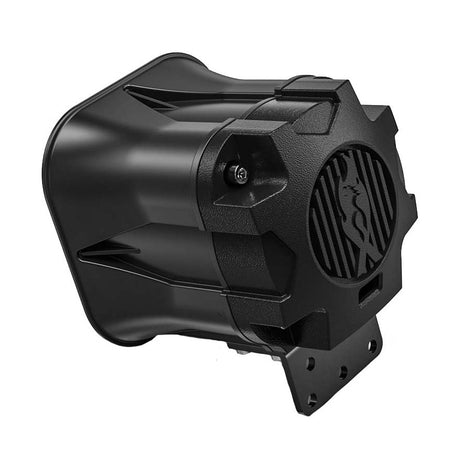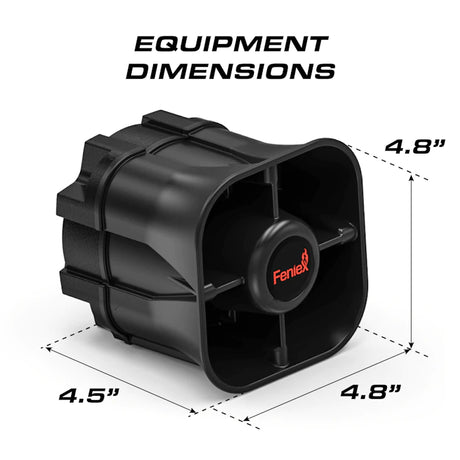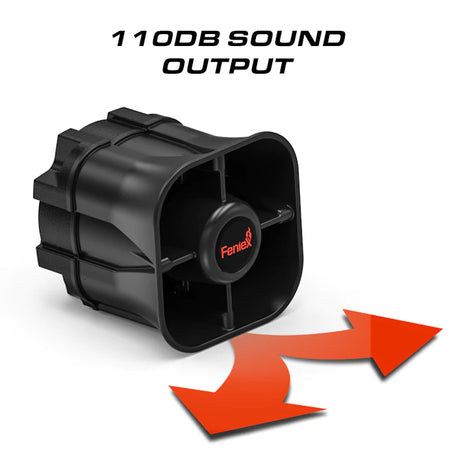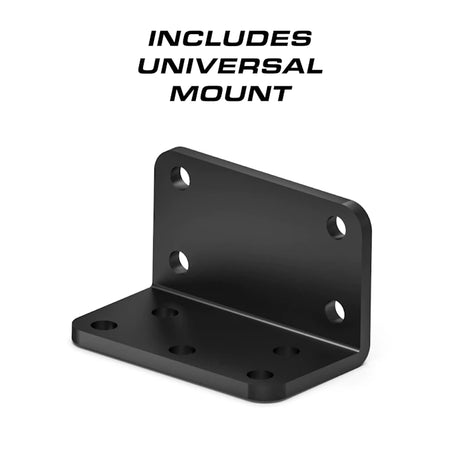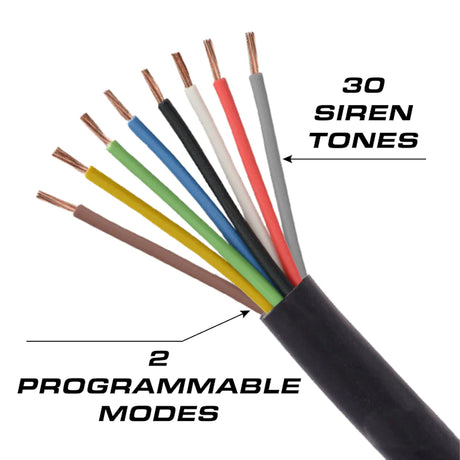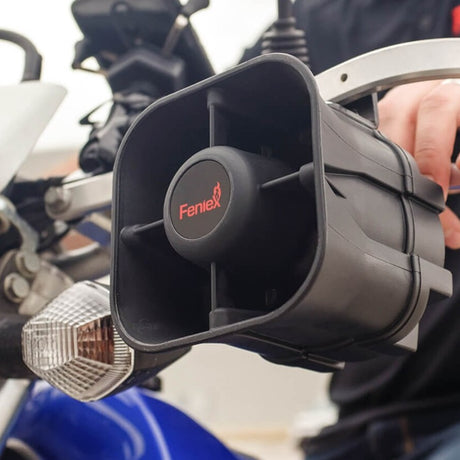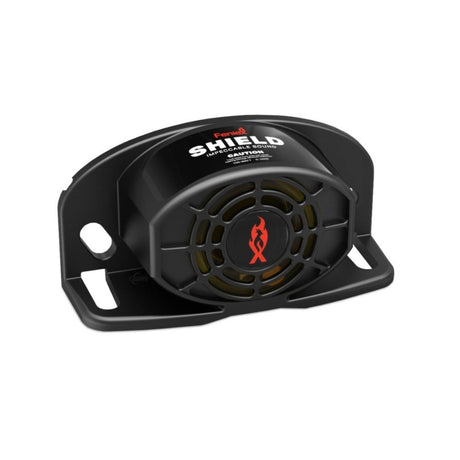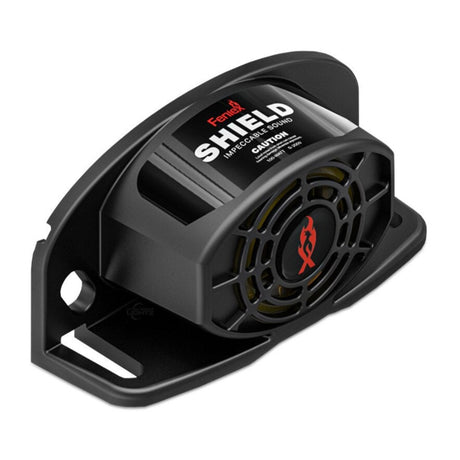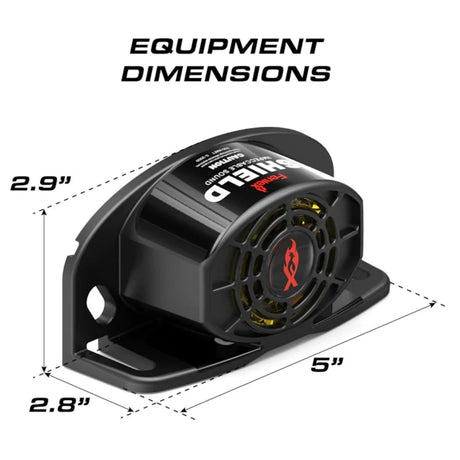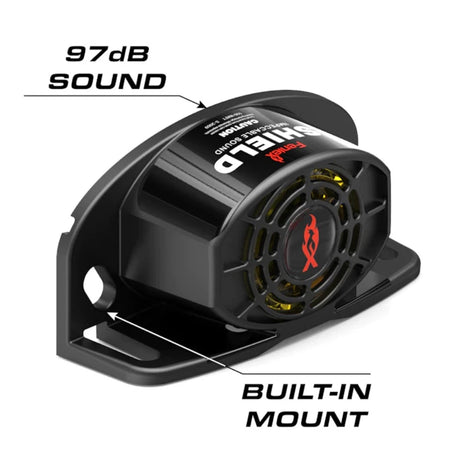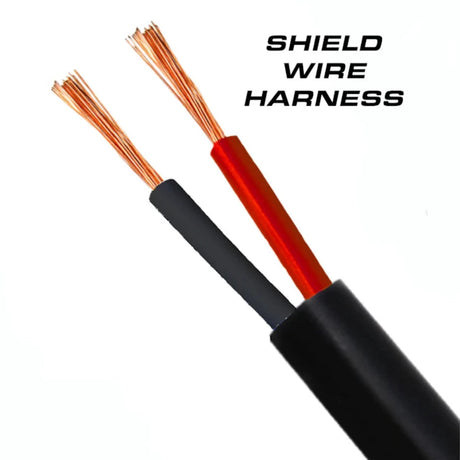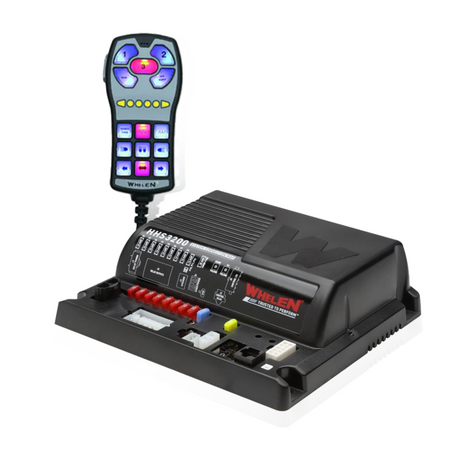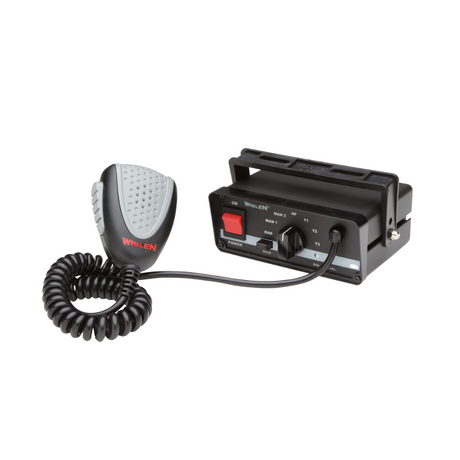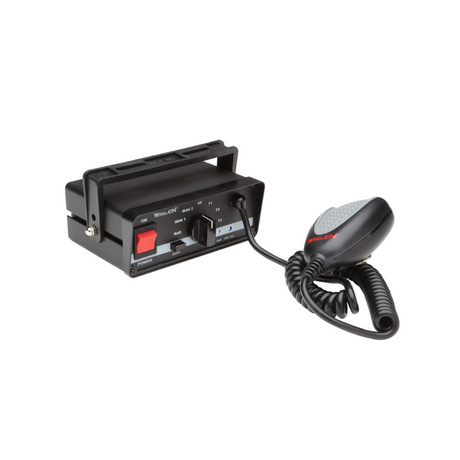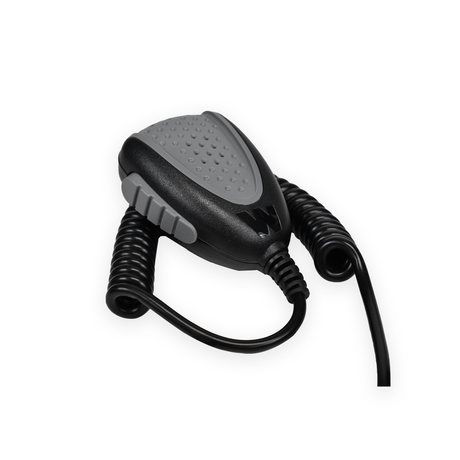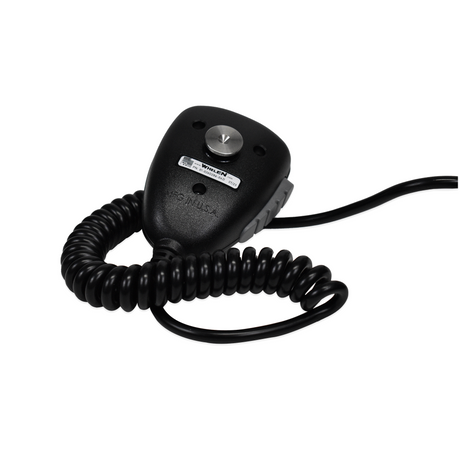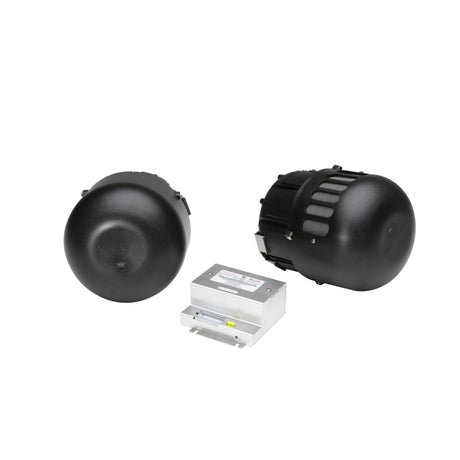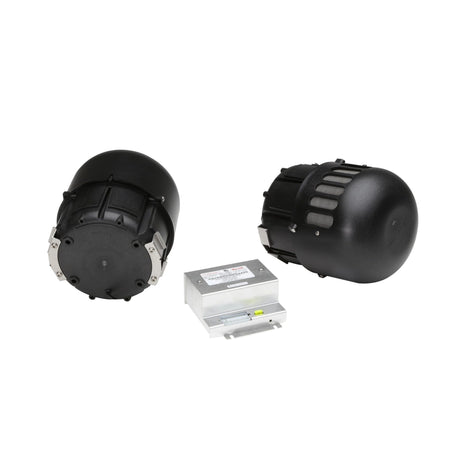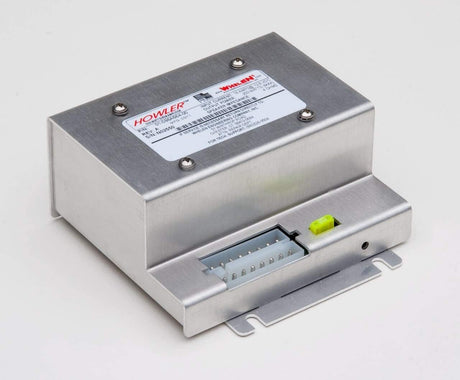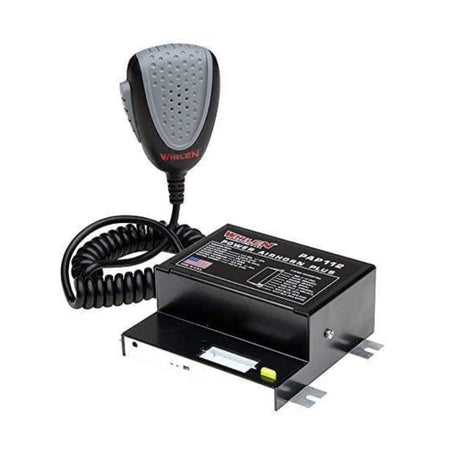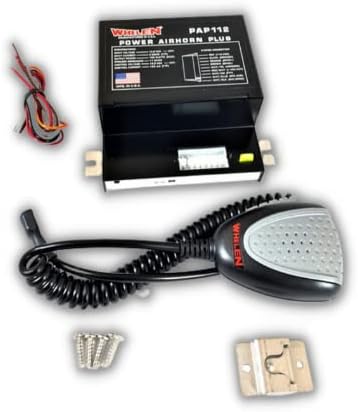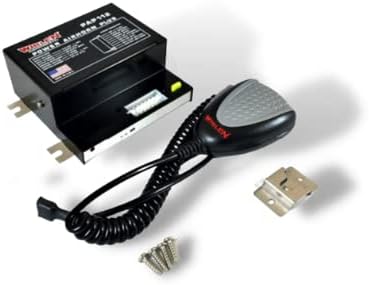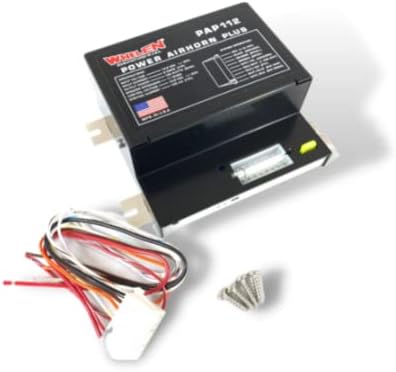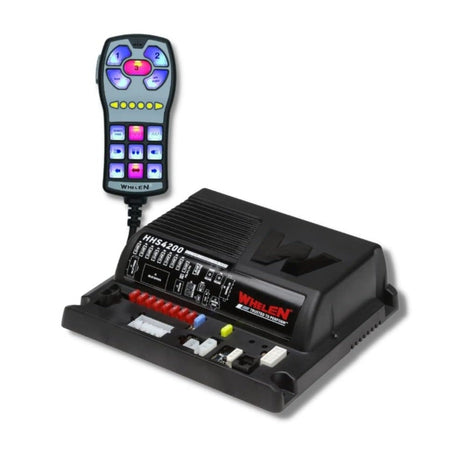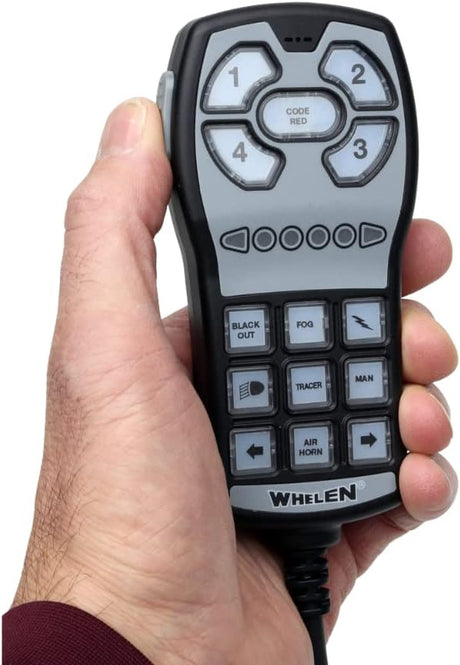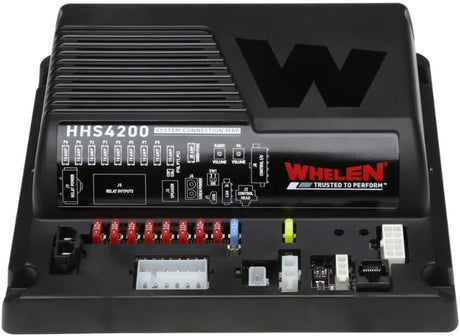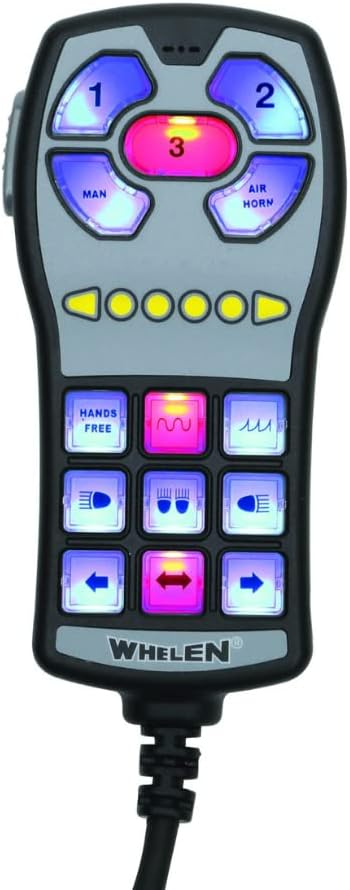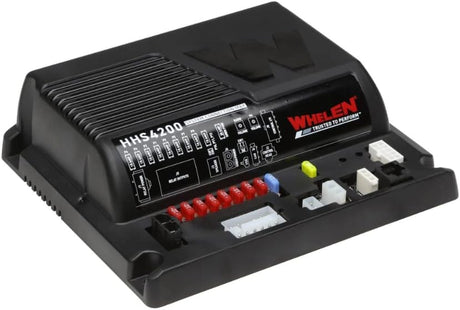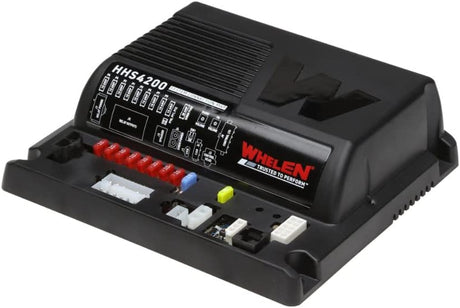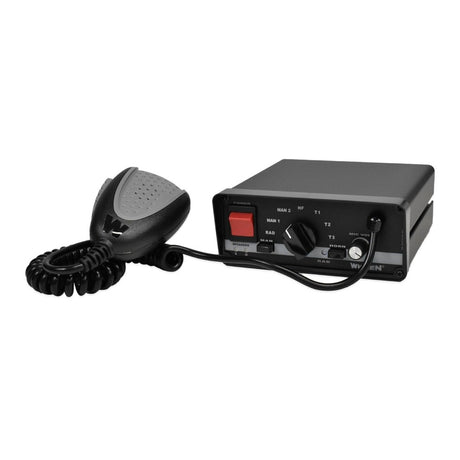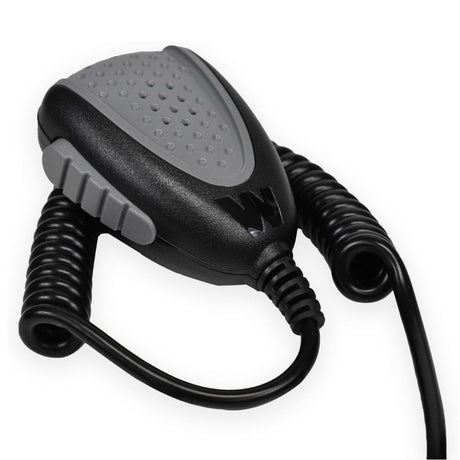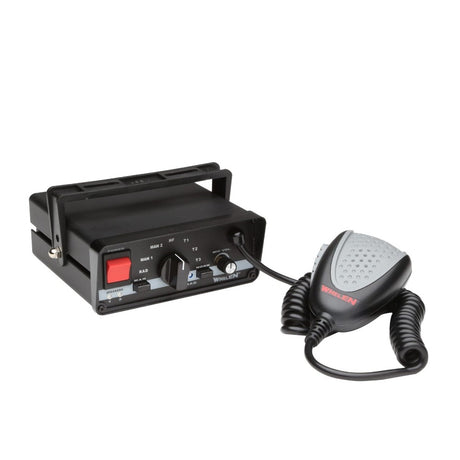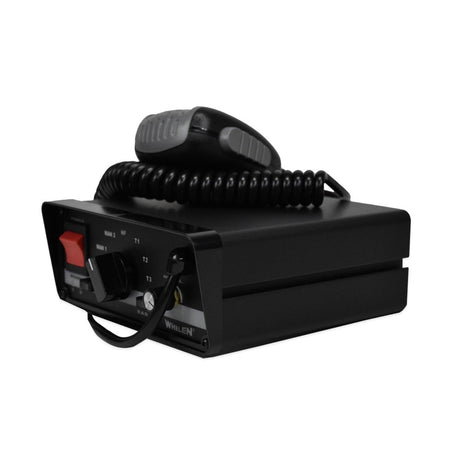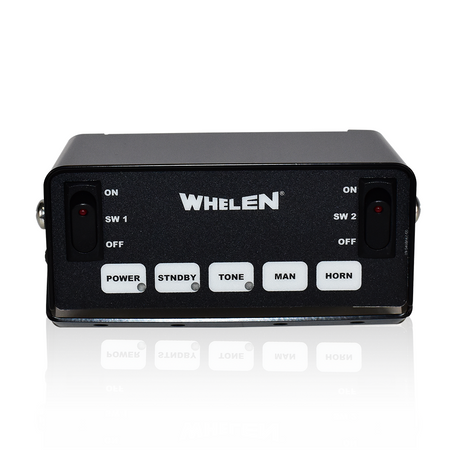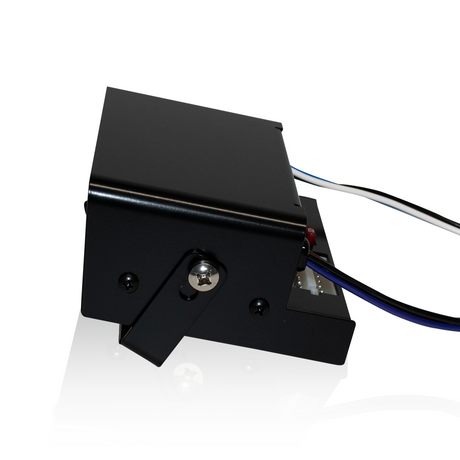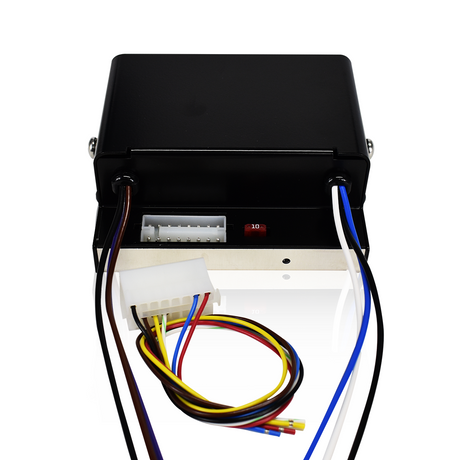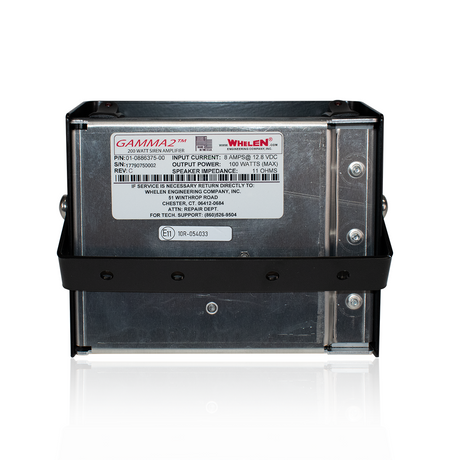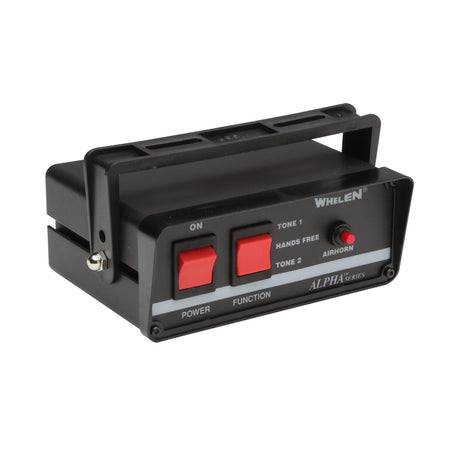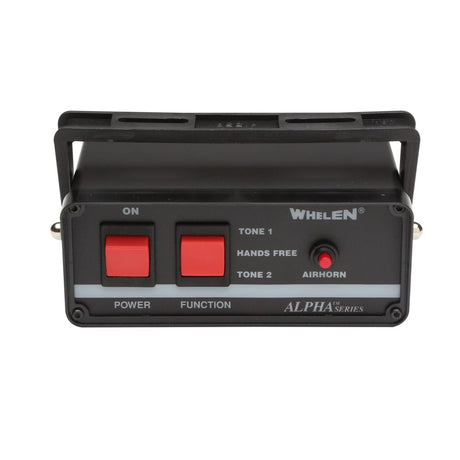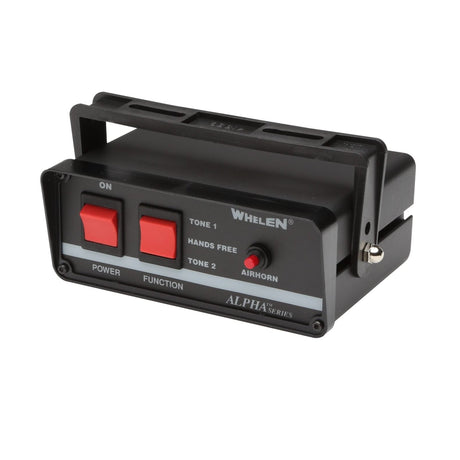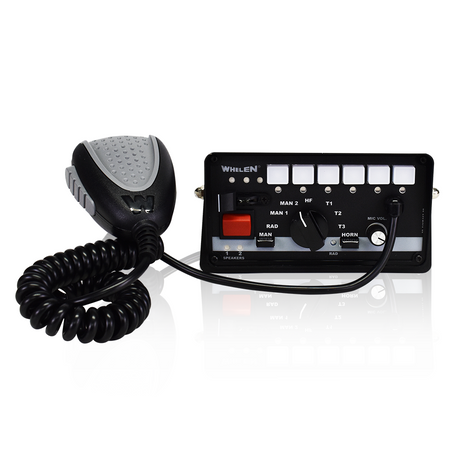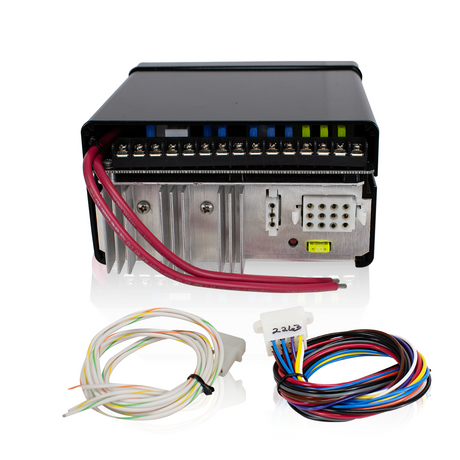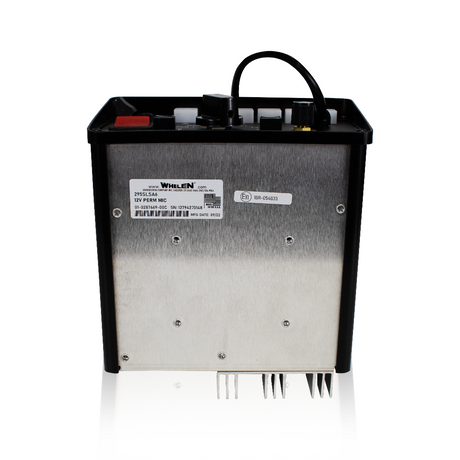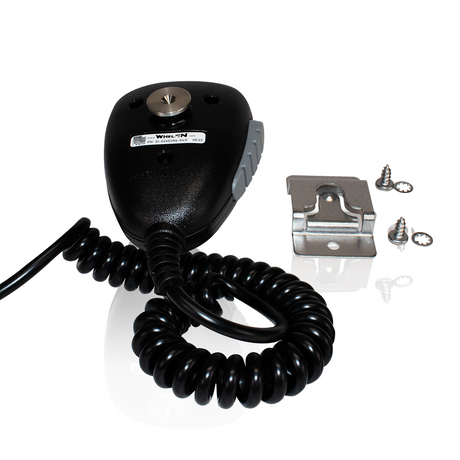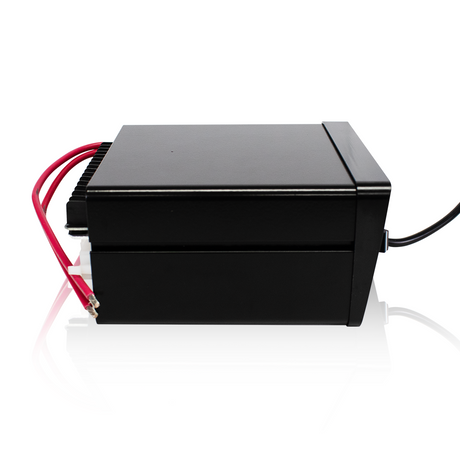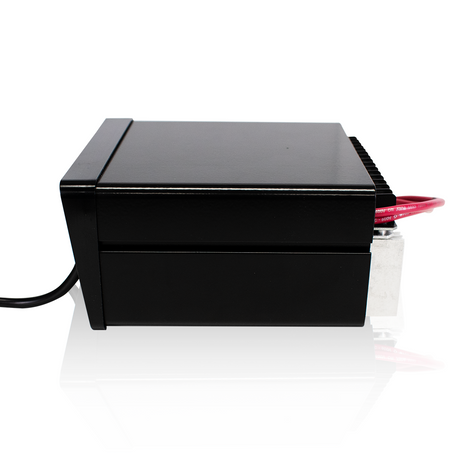Police Sirens
Ultra Bright Lightz offers a comprehensive selection of police sirens ranging from compact handheld units with PA functionality to powerful ground-shaking systems, with trusted brands like Whelen, Feniex, and our own UBL Electronics line. Our diverse catalog includes electronic sirens with multiple programmable tones, low-frequency options, and specialized solutions like backup alarms and undercover systems.
- Alphabetically, A-Z
- Alphabetically, Z-A
- Price, low to high
- Price, high to low
- Date, old to new
- Date, new to old
FiltersFilter & Sort
Whelen
Whelen HHS4200 Siren and Hand-Held Controller with WeCan
★★★★★(1)$519.99Unit price /Unavailable
Ultra Bright Lightz’ Comprehensive Guide to Police Sirens
Police sirens—often referred to as law enforcement sirens or emergency vehicle sirens—are critical components of public safety. Designed to emit loud, attention-grabbing police siren sounds, these audible warning devices help law enforcement agencies maneuver through traffic and swiftly respond to emergencies. In conjunction with emergency vehicle lighting such as light bars and flashers, sirens alert motorists and pedestrians to the presence of an approaching police car, allowing them to take necessary actions to clear the way.
What Are Police Sirens?
In essence, police sirens are specialized sound generators engineered for maximum auditory impact. Their primary function is to cut through ambient noise—whether it’s honking horns, bustling city traffic, or loud music—ensuring that drivers and pedestrians can detect and locate the oncoming police vehicle. Most sirens for police cars offer multiple tone patterns, such as wail, yelp, hi-lo, and phaser, each intended for different traffic conditions and response scenarios.
Why Police Sirens Matter
- Public Safety: When seconds count, quick and efficient responses save lives. Emergency warning systems featuring sirens enable officers to arrive at crime scenes, accidents, or critical incidents faster.
- Traffic Management: By delivering a piercing sound, police sirens help clear congested roads. This not only expedites law enforcement operations but also reduces the risk of collisions involving emergency vehicles.
- Situational Awareness: The varying police siren sounds notify the public of the urgency level. A steady “wail” might signal a routine patrol rush, while a more rapid “yelp” indicates a high-priority situation.
Engaging the Community
Effective use of sirens also involves community education. Many departments work closely with local organizations to raise awareness about proper driver etiquette—like pulling over and staying put until the emergency vehicle has passed. By understanding how police sirens function and why they shift between different tones, citizens can respond more safely and confidently whenever they hear an approaching law enforcement vehicle.
In the following sections, we’ll explore the history, mechanics, types of siren tones, and best practices surrounding police sirens. This will help you better understand not only the technology but also the legal and safety considerations that guide the use of these vital emergency vehicle tools.
History & Evolution of Police Sirens
Police sirens have come a long way from their humble beginnings. What started as rudimentary noise-making contraptions has transformed into sophisticated, multi-tone sirens used around the world. Understanding this evolution helps illustrate why today’s emergency vehicle sirens are far more effective—and far more versatile—than those of the past.
Early Siren Technology
In the early 20th century, mechanical sirens dominated the landscape. These devices relied on spinning discs or air-powered mechanisms to produce loud, attention-grabbing tones. Although groundbreaking for their time, they were often bulky, less reliable, and somewhat limited in pitch variety. As motor vehicles became more prevalent, law enforcement agencies recognized the need for stronger, more efficient ways to alert the public, paving the way for the first wave of innovation in police siren design.
Key Milestones
- 1920s–1930s: Mechanical sirens became increasingly common, gradually replacing basic horns on patrol cars.
- Mid-1900s: Technological advances spurred interest in electric-driven sirens that could generate more consistent and potent sounds.
Shifts in Design & Technology
By the mid-20th century, engineers began experimenting with electronic sirens, which offered enhanced volume control and the ability to produce varied tones. This shift marked the birth of what we now recognize as the modern law enforcement siren.
1. Multi-Tone Sirens
- The introduction of wail, yelp, hi-lo, and phaser modes gave officers the flexibility to adapt their alerts to different traffic conditions and urgency levels.
- Federal Signal, Whelen, and Code 3 emerged as pioneering manufacturers, each designing systems that pushed the limits of siren frequency and decibel levels.
2. Programmable Siren Controllers
- Digital controllers soon followed, allowing agencies to customize siren patterns and switch tones at the push of a button.
- These advancements improved not only loudness but also clarity, making it easier for drivers and pedestrians to identify the direction of an oncoming police vehicle.
3. Modern Manufacturing & Innovation
- Today’s systems are designed to be compact, energy-efficient, and highly durable, integrating seamlessly with emergency vehicle lighting and other public safety equipment.
- State-of-the-art materials and electronic circuitry reduce heat buildup and extend the lifespan of both siren speakers and controllers, ensuring reliability in the field.
Over the years, police sirens have shifted from simple noise devices to technologically advanced, multi-tone solutions that cater to a wide range of emergency scenarios. In the following sections, we’ll explore the fascinating mechanics behind modern sirens, the various tone patterns they use, and the legal considerations that keep them regulated and effective.
How Police Sirens Work
Police sirens—also known as law enforcement sirens or emergency vehicle sirens—combine carefully engineered hardware with advanced electronics to produce the loud, penetrating police siren sounds we’re all familiar with. By understanding the basic mechanics, the role of siren speakers, and the function of multi-tone sirens, you can see why these audible warning devices are so effective at alerting motorists and pedestrians.
Basic Mechanics
Sound Generation & Siren Frequency
At their core, police sirens generate sound by rapidly oscillating air or vibrating a diaphragm at a specific siren frequency. Modern electronic systems use amplifiers to boost this signal, ensuring the tones are loud enough to cut through traffic noise. Different siren manufacturers—such as Federal Signal, Whelen, and Code 3—optimize these frequencies for maximum effectiveness, balancing volume with clarity.
Decibel Levels & Speaker Configuration
The volume of a siren is measured in decibels (dB). A higher decibel rating means the siren can be heard from greater distances or in noisier environments. Most siren speakers range between 100 to 130 dB, though precise levels can vary based on vehicle upfitting needs and local siren regulations. Proper placement of the speaker—often on the vehicle’s front bumper or behind the grille—is crucial to maximize sound projection and minimize interference from the vehicle’s structure.
Siren Controllers & Amplifiers
Multi-Tone Sirens
One major advantage of modern emergency vehicle sirens is their ability to switch between distinct tone patterns—commonly referred to as wail, yelp, hi-lo, and phaser modes. Each tone offers unique advantages. For instance:
- Wail: A long, sweeping tone that covers a broad frequency range, ideal for high-speed responses on highways.
- Yelp: A quicker, higher-pitched tone that helps navigate dense city traffic.
- Hi-Lo: An alternating tone pattern often used in European-style sirens or for special alert situations.
- Phaser: A rapid, attention-grabbing tone that’s especially useful in short bursts to get immediate driver attention.
Siren Controllers
Digital controllers let officers easily toggle between these tones, tailoring the siren output to real-time traffic conditions. Some advanced systems even support siren programming, enabling further customization, such as ramping up tones or creating unique alerts.
Why Do Police Sirens Change Pitch?
Cutting Through Ambient Noise
In busy urban areas, ambient sounds—everything from car engines to construction equipment—can drown out a static siren tone. By changing pitch, a siren becomes more noticeable, drawing drivers’ attention and prompting them to clear the roadway.
Human Perception & The Doppler Effect
Our brains are wired to notice abrupt pitch changes, making a multi-tone siren inherently more effective than a single, unvarying signal. Additionally, as a police vehicle moves closer, the Doppler effect further alters the perceived pitch of the siren, helping motorists gauge distance and direction.
Whether you’re looking to upgrade your department’s police siren setup, researching audible warning devices for compliance, or simply curious about the engineering behind these lifesaving tools, understanding how sirens work is key. From the fundamental siren frequency range to sophisticated siren controllers that support multiple tones, it’s clear that modern police sirens are anything but simple noisemakers. They’re precise instruments designed to command attention and ensure emergency vehicles can navigate swiftly and safely through crowded roadways.
Types of Police Siren Tones
When it comes to police sirens, the variety of tones is as important as the volume. Each tone serves a specific purpose, helping law enforcement vehicles navigate different traffic conditions and capture driver attention in unique ways. Modern police sirens are typically programmed to cycle through multiple tones—often referred to as multi-tone sirens—ensuring a more effective and versatile alert system.
Standard Tones: Wail, Yelp, Hi-Lo, and Phaser
1. Wail
- Often the default setting on many police sirens, the wail tone features a long, sweeping pitch that steadily increases and decreases in frequency.
- Ideal for highway driving and situations where officers need to be heard from a distance.
2. Yelp
- A shorter, faster oscillation than the wail, the yelp tone quickly alternates high and low pitches.
- This tone is especially effective in urban settings, where constant noise can compete with emergency vehicle sirens.
3. Hi-Lo
- Commonly associated with European police sirens, the hi-lo tone produces a distinct two-note pattern.
- Useful in certain jurisdictions to signal unique emergencies or serve as an additional alert method.
4. Phaser
- A rapid, pulsating tone designed for short bursts to grab immediate attention.
- Typically used in high-urgency responses, especially when traffic is heavy and drivers need a quick cue to clear the road.
Check out our Sho-Me 31.2515 Siren Demo on YouTube to hear this siren in action — and the difference between its settings (wail, yelp, etc.).
Specialized & Advanced Tones
Beyond the standard quartet, many manufacturers of police sirens offer specialized tones. These can range from air horn blasts for quick alerts to electronically synthesized signals tailored to specific regions. In some cases, departments even integrate multi-tone sirens with voice broadcast capabilities, enabling officers to issue audible instructions in conjunction with their siren.
Choosing the Right Tone for the Situation
Each police siren tone is designed to excel in a specific environment:
- High-Speed Pursuits: Long, sweeping tones like wail or hi-lo provide advanced warning to traffic up ahead.
- Dense Urban Areas: Fast, piercing tones such as yelp and phaser cut through ambient noise.
- Special Events or Direct Commands: Voice-enabled or air horn functions allow for clear communication when needed.
By selecting the correct tone at the right time, law enforcement officers can maximize the effectiveness of their police sirens while minimizing confusion for drivers and pedestrians. From the steady, far-reaching wail to the rapid-fire phaser, each tone plays a unique role in ensuring public safety and helping officers reach their destinations with fewer obstacles.
Key Components of a Police Siren System
Modern police sirens do more than simply emit noise; they rely on a variety of components that work in harmony to produce the clear, commanding tones we associate with emergency vehicle sirens. By understanding these essential elements, law enforcement agencies and vehicle upfitters can ensure the most effective and reliable police siren configurations.
Siren Speaker
Central to Sound Projection
- The siren speaker is where the electronic signal transforms into the audible tones of your multi-tone sirens.
- Typically mounted on the front of the vehicle (behind the grille or on the bumper), the speaker projects sound forward to alert traffic and pedestrians.
Wattage & Decibel Rating
- Measured in watts (most common are 100W or 200W), the power rating directly affects how far the siren’s sound can travel.
- Higher decibel levels (dB) ensure your police sirens can cut through ambient city noise and stand out among competing sounds.
Durability & Construction
- Quality matters—leading brands often use high-grade materials to protect the speaker from weather, debris, and heat.
- Look for corrosion-resistant housings and robust internal components to withstand rigorous public safety equipment standards.
Siren Controller & Amplifier
Brain of the Operation
- The siren controller is the interface that lets officers select different siren tones—from wail and yelp to hi-lo and phaser.
- Digital controllers offer precise siren frequency adjustments, giving departments the flexibility to comply with siren regulations in various jurisdictions.
Amplifier Power
- Often built into the same unit as the controller, the amplifier boosts the electronic signal so the siren speaker can generate powerful, clear sound.
- High-quality amplifiers reduce distortion, ensuring that police sirens remain intelligible and sharp even at peak output.
User-Friendly Features
- Many controllers include backlit buttons or touchscreens for easy operation during low-light conditions.
- Some advanced models allow officers to switch between multi-tone sirens at the push of a button, enabling quick responses to changing traffic or emergency scenarios.
Additional Accessories
Light Bar Integration
- A well-coordinated system pairs police sirens with emergency vehicle lighting, such as overhead light bars and strobes.
- Synchronizing lights and sounds can increase driver awareness and reduce reaction times.
Wireless & Bluetooth Capabilities
- Some modern emergency vehicle sirens feature wireless control options, allowing upfitters to reduce cable clutter inside the cabin.
- Bluetooth-enabled systems can be monitored or updated via mobile devices, streamlining maintenance and software upgrades.
Vehicle Upfitting Kits
- Comprehensive kits include wiring harnesses, mounting brackets, and specialized hardware to ensure a clean, efficient installation.
- A well-planned upfit reduces the chance of electrical interference, extends the life of public safety equipment, and ensures compliance with siren regulations.
Importance of Proper Installation
Even the highest-quality police sirens depend on expert setup to function at their best. Proper positioning of the siren speaker, correct wiring of the controller, and secure mounting of accessories all contribute to a more reliable, louder, and clearer police siren system. Additionally, adhering to local siren regulations and noise ordinances helps departments avoid legal complications while maintaining optimal public safety standards.
By investing in reputable components—from robust siren speakers to advanced siren controllers—and ensuring professional vehicle upfitting, law enforcement agencies create a seamlessly integrated warning system. This collaboration of technology and smart design delivers the powerful, targeted sound necessary for rapid, safe emergency responses.
Regulatory & Legal Considerations
When it comes to police sirens, there’s more to consider than just decibel levels and tone patterns. Siren regulations and local noise ordinances play a pivotal role in determining how, when, and where these emergency vehicle sirens can be used. Understanding these legal boundaries helps ensure that law enforcement agencies deploy public safety equipment responsibly—and that individuals do not misuse or illegally install police sirens on personal vehicles.
Decibel Limits & Noise Ordinances
Federal & State Guidelines
- Many jurisdictions set decibel limits on police sirens to balance public safety with community noise concerns.
- Police siren laws by state often stipulate maximum allowable sound pressure levels, typically measured in decibels (dB) at a given distance from the vehicle.
Local Enforcement
- In densely populated areas, local noise ordinances may impose stricter rules than federal or state guidelines.
- Departments may need to adjust siren frequency or reduce the use of certain siren tones to avoid noise complaints or legal issues.
Civilian Use & Restrictions
Are Police Sirens Legal for Civilian Use?
- In most cases, the answer is no. Police siren laws generally prohibit non-authorized individuals from installing or operating law enforcement sirens on personal vehicles.
- Illegal use of police sirens can lead to hefty fines, vehicle impoundment, or even criminal charges, depending on local statutes.
Exceptions & Special Permits
- Some private security firms or emergency response organizations might have specialized permits to use emergency vehicle sirens.
- Always consult local authorities to clarify whether such permits are required and under what conditions they may be granted.
Compliance & Standards
National & International Standards
- Agencies like the Society of Automotive Engineers (SAE) and regulatory bodies set performance benchmarks for public safety equipment—including the effectiveness and reliability of police sirens.
- Meeting these standards ensures that emergency vehicle sirens are loud enough to be heard but not excessively disruptive.
Department Policies
- Beyond formal laws, many police departments have internal guidelines on how and when to activate multi-tone sirens (such as wail, yelp, hi-lo, and phaser).
- Adhering to these policies helps prevent public nuisance complaints and potential liability issues during high-speed pursuits or routine patrols.
Staying Within Legal Boundaries
Whether you’re an upfitter installing police sirens or an officer using them on duty, it’s crucial to understand and abide by the relevant siren regulations. This may involve:
- Periodic Decibel Testing: Ensuring the police siren system stays within legal noise thresholds.
- Regular Maintenance: Keeping siren speakers and controllers in top shape to prevent malfunctions or unintended volume spikes.
- Clear Usage Policies: Training officers on best practices for emergency vehicle sirens, including when to switch between different siren tones.
By paying close attention to legal considerations, law enforcement agencies uphold public trust while maximizing the life-saving potential of police sirens. Effective regulation not only maintains the integrity of emergency vehicle equipment but also preserves the critical balance between fast response times and community well-being.
Choosing the Right Police Siren (Buyer’s Guide)
Selecting the ideal police sirens for your department—or even a single patrol vehicle—goes beyond simply finding the loudest option on the market. From understanding decibel ratings to assessing siren frequency ranges, there’s a lot to consider when making a purchase. Below, we’ll explore key factors such as brand reputation, essential features, and budget considerations to help you choose the most effective emergency vehicle sirens.
Popular Brand Comparisons
Whelen
- Renowned for integrating cutting-edge electronics into their police siren systems.
- Many of their siren controllers feature customizable tone patterns (wail, yelp, hi-lo, phaser) and advanced diagnostic capabilities.
Ultra Bright Lightz
- Focuses on delivering feature-rich sirens at competitive price points, with the in-house UBL Electronics line offering professional-grade features without the premium cost.
- Known for exceptional customer service and technical support to help customers choose and configure the right siren system for their specific needs.
Federal Signal
- Known for pioneering multi-tone sirens and consistently pushing technological boundaries.
- Offers robust public safety equipment, with designs that emphasize clarity and reliability.
Code 3
- Emphasizes ease of installation and user-friendly vehicle upfitting options.
- Noted for offering a wide range of police sirens, from economical basics to high-end models with specialized tones.
Each manufacturer offers a unique blend of siren frequency options, siren speaker designs, and warranty coverage. Reading product reviews and consulting industry insiders can help you zero in on the right fit.
Feature Prioritization
Decibel Rating & Volume Control
- Higher dB levels ensure that your police sirens can pierce through ambient noise, but also consider local siren regulations that limit maximum volume.
- Look for built-in options to adjust volume quickly in different settings.
Tone Customization & Multi-Tone Sirens
- Modern police sirens typically include various tones—like wail, yelp, hi-lo, phaser—to cover multiple scenarios.
- Digital siren controllers may allow additional customization or even pre-set sequences for specific operations.
Durability & Build Quality
- Siren speakers should be weather-resistant and sturdy enough to endure daily stress on patrol vehicles.
- Seek models with robust casings and hardware capable of withstanding heat, vibration, and road debris.
Cost & Budget
Initial Investment vs. Longevity
- Premium public safety equipment often has a higher upfront cost but can save money in the long run through reduced maintenance and fewer breakdowns.
- Cheaper alternatives might suffice for low-intensity use but could wear out faster, leading to frequent replacements.
Installation & Upfitting Costs
- Factor in the expense of vehicle upfitting—including wiring, mounting kits, and labor.
- A seamless, professional installation typically reduces the risk of electrical interference and ensures compliance with police siren laws.
Bulk Purchases & Agency Discounts
- Many manufacturers offer volume discounts for police departments that need multiple emergency vehicle sirens.
- Large orders can also unlock additional support services, such as extended warranties or custom training sessions.
Buyer Tips
1. Match Local Regulations
- Before finalizing a purchase, confirm that the chosen police sirens adhere to state and municipal decibel limits or other siren regulations.
2. Test Before You Buy
- Whenever possible, request a product demo or trial period. Hearing the siren tones in action will give you a clearer sense of performance and clarity.
3. Assess Department Needs
- Consider the average environment your vehicles operate in—rural highways vs. urban streets—when choosing between wail, yelp, hi-lo, or phaser as primary tones.
4. Consult Other Agencies
- Networking with neighboring law enforcement agencies can provide valuable insights into the day-to-day reliability of certain siren manufacturers.
By balancing performance, compliance, and cost, you can select police sirens that meet your department’s unique requirements. From the wattage of the siren speaker to the customization options on the siren controller, every detail matters when the goal is to safely and effectively alert motorists and pedestrians in high-stress emergency situations.
Police Sirens Installation Process
Step #1: Planning & Preparation
- Choose the Right Location: For optimal sound projection, most siren speakers should be mounted on the front of the vehicle—behind the grille or near the bumper—clear of obstructions.
- Review Wiring Diagrams: Consult the manufacturer’s siren wiring guide or any specialized public safety equipment schematics to ensure correct connections.
- Gather Proper Tools: A professional installation may require crimping tools, wire strippers, weatherproof connectors, and vehicle-specific mounting brackets.
Step #2: Mounting the Siren Speaker
- Secure the speaker bracket to a sturdy area that won’t vibrate excessively.
- Position it so that it faces forward and remains unobstructed by body panels, license plates, or other accessories.
Step #3: Siren Controller & Amplifier
- Install the siren controller (and amplifier, if separate) in an easily accessible location within the cabin, such as the center console or dashboard.
- Follow the recommended power and ground connections to avoid electrical interference and ensure stable current flow.
- Label wires clearly to simplify future maintenance or troubleshooting.
Step #4: Testing the System
- After wiring everything, perform a thorough test of all multi-tone sirens (wail, yelp, hi-lo, phaser).
- Confirm that each tone is clear, loud, and free of distortion.
- Double-check voltage readings to ensure the system isn’t drawing too much power from the vehicle’s electrical system.
Troubleshooting & Repairs
Common Issues
- Distorted or Weak Sound: May indicate a loose speaker connection, damaged siren speaker, or faulty amplifier.
- Random Tone Changes: Could result from a malfunctioning siren controller or an electrical short in the wiring harness.
- Intermittent Operation: Often tied to grounding problems or a poor power source connection.
Diagnostic Steps
- Visual Inspection: Look for loose wires, corrosion on terminals, or physical damage to the siren speaker.
- Use a Multimeter: Check voltage levels at the controller and amplifier while the police sirens are active.
- Consult Manufacturer Resources: Most siren manufacturers have online guides or tech support lines to assist with complex issues.
8.3 Maintenance Schedule
Regular Checks
- Monthly Testing: Activate the police siren briefly in a controlled setting to ensure each tone (wail, yelp, hi-lo, phaser) sounds loud and clear.
- Speaker Inspection: Look for cracks, water intrusion, or any signs of damage. Replace compromised units promptly to maintain compliance with siren regulations.
Cleaning & Protection
- Corrosion Prevention: Keep connectors clean and sealed from moisture. Use dielectric grease if recommended by the manufacturer.
- Cable Management: Secure wiring away from moving engine parts or heat sources to prevent wear and tear.
Periodic Servicing
- Professional Tuning: Some agencies opt for periodic servicing by certified upfitters to fine-tune siren frequency and amplifier settings.
- Firmware Updates: Modern digital siren controllers may offer updatable software to improve performance or add new features.
Best Practices for Your Police Sirens’ Longevity
1. Follow Manufacturer Guidelines
- Each brand of police sirens may have unique recommendations for installation, tuning, and part replacement.
2. Use Quality Components
- Investing in reliable public safety equipment reduces the risk of failures and lowers long-term maintenance costs.
3. Document Everything
- Maintain a log of when police sirens were installed, serviced, or replaced. Proper record-keeping helps identify patterns and prevents overlooked issues.
By paying close attention to every phase of police siren installation—from choosing the right mounting location to meticulous wiring—and by adhering to a consistent maintenance routine, departments can significantly extend the lifespan and reliability of their emergency vehicle sirens. This commitment to detail ensures that officers have the dependable auditory alert systems they need to navigate busy roadways and protect public safety.
Police Sirens Safety & Best Practices
For police sirens to be effective, they must be used responsibly and in accordance with both operational guidelines and siren regulations. From reducing noise pollution to ensuring officers remain safe while activating emergency vehicle sirens, these best practices are essential for maintaining public trust and achieving swift, secure responses.
Proper Use in Traffic
Tone Selection
- Switching between wail, yelp, hi-lo, and phaser patterns can capture the attention of drivers and pedestrians more effectively.
- Use the wail for long-distance awareness, and switch to yelp in dense or slower-moving traffic to ensure higher visibility.
Awareness & Timing
- Activate police sirens well before approaching intersections or high-risk zones to give drivers ample time to react.
- Turn off or reduce siren volume in residential areas or at night if the emergency response level allows, balancing immediate needs with community concerns.
Communication with Other Drivers
- Combine audible warning devices with light bars and other emergency vehicle lighting to create a clear, unmistakable signal that law enforcement is approaching.
- Brief use of an air horn tone—if available—can be more effective in sudden, congested situations.
Protecting Hearing
Officer Safety
- Police sirens can reach decibel levels that pose potential hearing risks, especially during extended use.
- Departments may issue hearing protection for specific operations, like crowd control scenarios where siren speakers could be activated for prolonged periods.
Vehicle Cab Noise
- Modern siren controllers and carefully positioned siren speakers help minimize sound intrusion into the vehicle cabin.
- Regular checks of seals and insulation ensure less noise “bleeds” into the interior, safeguarding officers’ hearing over time.
Reducing Noise Pollution
Responsible Activation
- Overuse of police sirens in crowded urban environments can lead to community complaints and potential restrictions on siren regulations.
- Activate sirens only when necessary, relying on multi-tone sirens to change pitch and increase effectiveness, rather than turning up volume indiscriminately.
Driver & Public Education
- Many departments host public awareness campaigns on how to respond to emergency vehicle sirens—for example, pulling over safely and staying alert.
- Educating the public about different siren tones can reduce confusion, ensuring faster, more orderly compliance when police sirens are heard.
Best Practices for Efficiency & Safety
1. Regular Drills & Training
- Officers should train with police sirens in simulated scenarios to practice switching tones and coordinating with other public safety equipment.
2. Adhere to Department Policies
- Every agency has specific guidelines on emergency vehicle sirens usage—comply with these rules to maintain consistency and public trust.
3. Monitor Environmental Factors
- Weather conditions like heavy rain, fog, or snow can affect siren frequency penetration. Adjust usage accordingly to maintain effectiveness.
4. Stay Updated on Regulations
- Laws change over time—ensure your team is aware of any evolving siren regulations or decibel restrictions in your jurisdiction.
By combining thoughtful usage, responsible volume control, and thorough community education, police sirens can remain an invaluable tool for rapid response while minimizing negative impacts on the public. Effective deployment of emergency vehicle sirens not only enhances officer safety but also helps maintain respectful, cooperative relationships with the communities they serve.
Understanding Police Sirens
Whether you’re involved in vehicle upfitting for a fleet of patrol cars or simply curious about the mechanics and legalities of police sirens, understanding the nuances of emergency vehicle sirens is key. From choosing the right siren tones (wail, yelp, hi-lo, phaser) to staying updated on siren regulations and decibel limits, each detail contributes to effective and responsible use.
Summary of Key Takeaways
1. Variety of Tones
- Multiple tone settings help police sirens stand out in different noise environments and alert drivers more effectively.
2. Component Quality Matters
- Investing in reliable siren controllers and siren speakers from reputable manufacturers ensures durability and clarity.
3. Legal & Regulatory Compliance
- Familiarize yourself with police siren laws by state and local ordinances to avoid legal complications and community complaints.
4. Proper Installation & Maintenance
- Professional installation reduces the risk of malfunctions, and regular upkeep keeps your emergency vehicle sirens operating at peak performance.
5. Responsible Use
- Minimizing unnecessary noise, particularly in residential areas, and educating the public about how to respond to police sirens fosters a better relationship with the community.
Shop Police Sirens from Ultra Bright Lightz
Explore Our Police Siren Products
Ready to upgrade your fleet? Check out our comprehensive range of police sirens, controllers, and accessories designed to meet diverse operational needs.
Request a Quote or Consultation
Not sure which multi-tone sirens or siren speakers fit your agency best? Contact our expert team for personalized recommendations and pricing.
Stay Informed
Sign up for our newsletter to receive updates on the latest siren regulations, product innovations, and best practices for public safety equipment.
Ask Our Experts
Have specific installation questions or need troubleshooting advice? Reach out to our technical support for step-by-step guidance on everything from wiring to siren frequency optimization.
By combining the right equipment with proper training and adherence to legal guidelines, you can ensure that police sirens remain invaluable tools for rapid, effective emergency responses.
We’re here to help you find the perfect fit—so take the next step and discover how our solutions can elevate your law enforcement capabilities.
Misc. Police Sirens Facts
Ambulance, EMS, and Rescue Sirens: Key Differences and Similarities
When discussing police sirens, it’s helpful to compare them with the audible warning systems on ambulances, EMS (Emergency Medical Services) vehicles, and rescue units. While all these sirens share a common goal—alerting traffic to clear the way—there are key differences in their codes, meaning, and operating parameters. For instance, EMS and rescue vehicles may use more pulsating tones for patient safety considerations, while police sirens might emphasize multi-tone features for high-speed response. Being able to describe these differences helps agencies choose the correct siren setups and follow the appropriate codes for each emergency service type.
Rumbler Sirens and Vintage Police Sirens
Along with the familiar wail, yelp, and hi-lo patterns, some departments deploy rumbler sirens, which utilize low-frequency sound waves to make vibrations that drivers can feel as well as hear—especially effective in dense urban traffic. Meanwhile, vintage police sirens appeal to collectors and hobbyists who appreciate the mechanical designs from earlier eras. The beginning and start of these vintage systems trace back to the invented mechanical sirens of the mid-20th century, showcasing how far police sirens have come in both technology and meaning over time.
Agency-Specific Usage: NYPD, FBI, and the American Approach
Not all police sirens are created equal. Large agencies such as the NYPD and FBI often maintain their own specific codes, protocols, and siren tones to align with American law enforcement standards. These agencies sometimes require unique siren patterns for undercover or high-priority operations, further highlighting differences in how sirens are chosen and deployed. Understanding these nuances is essential if your department plans to adopt or mirror strategies used by larger, nationally recognized agencies.
Police Sirens for Sale: What to Know About Cheap Options
For departments or smaller agencies on a tight budget, finding police sirens for sale at a cheap price point can be tempting. However, beware of subpar build quality or vintage units that aren’t compatible with modern codes and electronics. Cheaper sirens might also lack key safety or regulatory features, leading to potential legal issues and performance drawbacks. Always verify compliance with local regulations—and consider the total cost of ownership, including maintenance and potential replacement fees—before opting for a cheap siren system.
Using Sirens on Trucks and Undercover Vehicles
Beyond the typical cruiser or SUV, some agencies equip a truck or undercover sedan with police sirens for specialized tasks. Whether it’s a SWAT response unit or a covert investigation team, having discreet but powerful multi-tone sirens can be crucial for rapid response. Installing sirens on a truck often involves heavier-duty mounts and higher-output siren speakers to accommodate the vehicle’s size. Undercover vehicles must strike a balance between stealth and functionality, ensuring sirens remain out of sight until needed.
The Start and Invention of Police Sirens
Although mechanical horns served early law enforcement, the beginning of the police sirens we recognize today dates back to the early 20th century. Originally invented by engineers seeking to make a more reliable audible warning, these prototypes evolved into the sophisticated electronic systems used now. Their meaning in modern traffic management is immeasurable, as these sirens save precious time in emergencies and drastically reduce the risk of collisions—solidifying their status as essential public safety equipment.
Misc. Police Sirens Facts
When upfitting a police cruiser—or even an ambulance—with a modern multi-tone or mechanical siren, it’s crucial to meet compliance and regulations set by local codes. During installation, focus on wiring the speaker correctly to handle loud volumes without shorting the electrical system. Older, vintage setups sometimes lack advanced frequency controls, so ensure you pick a brand that supports both emergency use and night patrols without risking officer hearing. Pay attention to decibel output, as excessive noise can distress dogs and the public if misused.
During training, officers learn when to switch tones—often critical in a high-speed chase—and where parking or installation angles matter most. Proper upfitting also safeguards you from fines or legal issues if your siren system fails to meet codes. From mechanical wails to multi-tone signals, picking the right siren ensures the public remains safe, whether you’re clearing traffic at night or responding to an emergency scene.
Modern Police Sirens Sounds
Modern sirens typically feature yelp, wail, phaser, and hi-lo patterns, each with a unique meaning and difference in tone. When working an intersection during priority response, officers often switch from wail to yelp to pierce through ambient noise. An old siren might have a single volume control, but new brand offerings provide advanced tone cycling for variable traffic scenarios.
If dogs are howling in the distance, that’s a common reaction to high-pitched signals (as mentioned above in our FAQs section). Proper siren use also extends to rescue vehicles, which rely on the same acoustic principles. The question "does brand matter?" arises frequently, but so long as a speaker can handle wide volume ranges—plus remain legal to operate—most recognized names are suitable. If you find a siren sale online, confirm how many hours of continuous operation it can handle before burnout.
Remember that certain patterns (like phaser) are best for short bursts, whereas hi-lo can maintain clarity over extended periods. Understanding these differences helps officers respond effectively without creating public confusion or unnecessary traffic risk.
Noise Concerns with Police Sirens
Balancing noise concerns with emergency needs is a major challenge for law enforcement. Residents may file a complaint about night siren usage if decibel levels are excessively high. Local codes and regulations define legal thresholds for multi-tone sirens, mandating compliance around certain decibel limits. The difference between an old, vintage mechanical siren and a modern tone generator becomes clear when you compare night calls in a quiet suburb to a high-speed chase on the highway.
Departments also weigh how traffic behaves at an intersection with or without advanced rescue signals. Although some might question “does it matter which siren I use?” most agencies find that proper installation and strategic upfitting are key to reducing public backlash. That’s why certain brand lines go on sale only after they pass rigorous testing for difference in pitch cycles. Ultimately, hearing safety is vital—not just for the public, but also for officers constantly exposed to these alerts.
The Evolution of Police Sirens
As mechanical sirens slowly give way to multi-tone electronic systems, manufacturers continue innovating with frequency shifts and advanced speaker designs. This evolution helps reduce noise pollution while ensuring compliance with updated codes and regulations. A leading brand might showcase a new siren that only hits peak decibel levels during a chase, lowering the hearing risks for officers and limiting upset dogs in the neighborhood. Future installation kits will likely support simpler wiring configurations, letting departments switch from a standard to a stealth setting for night duty.
Whether in an ambulance or patrol car, high-fidelity sirens remain essential for urgent emergency calls. The next wave of upfitting solutions also addresses “vintage” expansions, allowing agencies to use updated controllers in older vehicles without losing the loud advantage of tried-and-true setups. Meanwhile, ongoing training fosters safer adoption of technology that meets or exceeds current compliance guidelines. Ultimately, the future belongs to versatile, user-friendly siren systems that adapt to any public setting, ensuring officers meet critical demands while respecting modern regulations.
Frequently Asked Questions (FAQs)
Police sirens often spark a variety of questions, from basic inquiries about their volume levels to more in-depth concerns about siren regulations. Below are some of the most common FAQs to provide clarity and guidance on emergency vehicle sirens.
How loud are police sirens?
Most police sirens operate between 100 and 130 decibels (dB), although the exact decibel rating can vary based on manufacturer and local siren regulations. Sirens need to be loud enough to penetrate ambient traffic noise, ensuring drivers and pedestrians can quickly recognize an approaching law enforcement vehicle.
Why do police sirens switch patterns?
Switching siren tones—often between wail, yelp, hi-lo, and phaser—helps cut through varying ambient noises and alerts drivers more effectively. Different tones resonate at different siren frequency ranges, ensuring that motorists are less likely to become desensitized to a single, continuous tone.
Which brand makes the best police siren?
Each brand offers unique features, from customizable multi-tone sirens to advanced siren controllers. The “best” choice usually depends on factors like budget, vehicle type, desired features, and any specific vehicle upfitting requirements. Shop Ultra Bright Lightz for top brands and expert customer service — we’re here to help you find the right police sirens for your needs!
Are police sirens legal for civilian use?
In nearly all jurisdictions, police sirens are restricted to official emergency vehicle use only. Siren regulations typically prohibit unauthorized installation or operation of law enforcement sirens on personal vehicles. Violating these laws can lead to fines, vehicle impoundment, or criminal charges.
Do different siren tones indicate different emergencies?
While there’s no universal code that mandates a specific tone for a specific type of emergency, many departments establish internal guidelines. For instance, a wail might be used for high-speed pursuits in open areas, while a yelp might be preferred in congested urban environments. The goal is to choose a tone that most effectively alerts nearby drivers.
How can I maintain and extend the life of police sirens?
Regular inspections, proper vehicle upfitting, and adherence to manufacturer guidelines are crucial. Ensure your siren speaker is mounted securely and remains free of damage or debris. Periodically test all siren tones (wail, yelp, hi-lo, phaser) to confirm they’re loud and clear. Finally, keep wiring connections clean and sealed to prevent corrosion or electrical shorts.
What are the penalties for misusing police sirens?
Penalties vary by jurisdiction but can include substantial fines, points on your driving record, or even arrest if you’re impersonating a law enforcement officer. Misuse also poses safety risks by confusing other drivers, potentially leading to accidents.
Are there recommended guidelines for using police sirens at night?
Some departments advise limiting police siren activation during late hours unless absolutely necessary, out of consideration for residential noise levels. Siren regulations may also include specific decibel limits or recommended tone patterns for nighttime use to balance operational needs with community well-being.
Can I upgrade my existing police siren system?
Yes. Many siren manufacturers offer retrofit kits compatible with older public safety equipment. These kits often include new siren controllers, upgraded siren speakers, or additional features like integrated LED light functions. Always verify that any upgrades comply with local siren regulations before installation.
Is professional installation necessary for police sirens?
Professional installation is strongly recommended. Trained upfitters ensure your police sirens are correctly wired, mounted, and tested. This helps prevent electrical interference, distortion, and potential malfunctions. It also reduces the likelihood of violating noise ordinances or incurring warranty issues.
Why do dogs howl at police sirens?
Have you ever wondered why dogs seem compelled to howl or bark when police sirens pass by? The difference in pitch and high siren frequency can trigger a canine’s ancestral pack instincts, causing them to vocalize in response. Experts suggest it might also relate to the meaning dogs assign to such high-pitched noises—interpreting the siren as a fellow dog or a threat. While not directly tied to law enforcement protocol, this question pops up often in public forums, making it worth addressing.
Why do police touch your tail light?
Police officers historically touched tail lights during traffic stops to leave fingerprint evidence linking them to the vehicle and startle occupants who might be concealing items. For more, read our full article on why police may touch your tail light.

